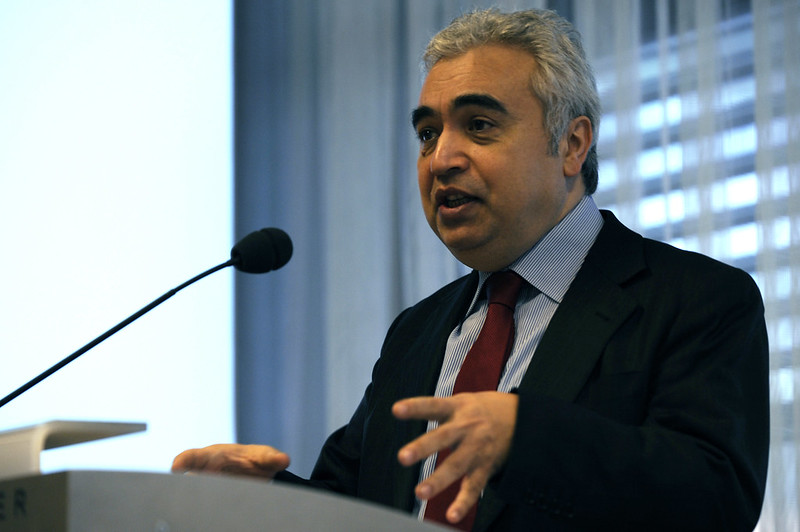‘Solar is the new king of energy markets’

The advance of PV has been lauded by the International Energy Agency as it launched the latest edition of a flagship World Energy Outlook 2020 report overshadowed by the Covid-19 crisis and uncertainty over how long the economic recovery could take.

International Energy Agency (IEA) executive director Fatih Birol this week launched the organization’s flagship World Energy Outlook 2020 report by declaring: “Solar is the new king of the global electricity markets.”
With the international thinktank bringing forward publication of its annual report by a month, however, Birol said the study painted a far from rosy outlook for the prospects of limiting the global temperature rise to 1.5 degrees Celsius. Asked at Tuesday’s launch of the study whether global net zero emissions would be possible by mid-century, the IEA chief said only: “It is theoretically not impossible.”
The focus of the latest iteration of the IEA’s set of forecasts inevitably focuses on the Covid-19 crisis experienced by the world since the last edition, in November.
The study considers four future scenarios which hinge on the question of when the global health crisis will be contained. The ‘stated policies’ (STEPS) scenario echoes the expectations voiced by global governments that the novel coronavirus will be contained next year and that the economic recovery will be complete by the end of the year. That STEPS outlook forms the basis for two more optimistic predictions: the ‘sustainable development scenario’ (SDS) builds on the stated policies prediction by envisioning adoption of legislation in line with the ideals of the Paris climate agreement and the ‘net zero by 2050’ forecast extends the scope of the SDS situation to 2050-70 to consider what would be required to hit the goal by mid century.
Longer recession
By contrast, the IEA’s ‘delayed recovery’ picture (DRS) posits an extended Covid-19 shock with the global economy not rebounding until 2023 and the world entering a decade of the lowest energy demand growth since the 1930s. The DRS outlook came in for relatively few mentions in either the IEA summary of the study or the official launch.
There were plenty of plaudits for solar and PV projects “which now offer some of the lowest-cost electricity ever seen,” according to the IEA. Cheap finance and ever cheaper materials costs would see solar play a big part in renewable energy contributing 80% of the expected 9% annual growth in global energy demand to 2030 under the organization’s STEPS scenario. Hydro would still dominate but there would be record years of solar deployment every year from 2022 to the end of the decade, according to the IEA.
Grids
Solar – and nuclear – would contribute even more in the more optimistic sustainable development and net-zero forecasts, driving a great need for improved grids, energy flexibility and energy storage, with India becoming the world’s biggest utility scale storage market at some point. The fact that big investment will be required to upgrade electricity grids at a time when many utilities – especially in the developing world – are in financial crisis was not lost on the authors of the IEA report.
The likelihood of Covid-19 accelerating the death throes of coal was reflected by expectations that 275 GW of coal-fired power capacity would be shuttered by 2025, including 100 GW in the U.S. and 75 GW in the EU. The 39% of the world’s electricity generated from coal last year is set to fall to 28% by 2030 under the business-as-usual STEPS scenario, or to 15% under the sustainable outlook.
There was less immediate prospect of the ‘peak oil’ which has been the subject of speculation in some quarters this year and the fortunes of gas will depend heavily on policy, according to the IEA. Clean air policy and manufacturing growth in south and east Asia could drive a 30% rise in global gas demand by 2040, the study speculates.
Tim Gould, head of energy supply outlooks and investment at the IEA, spoke at the launch of the report to point out that consumers have spent $1 trillion less on oil products this year than last year. With oil and gas values having fallen by a quarter this year, the industry has written off $50 billion of assets thus far in 2020. Gould said the 60% of oil income contributed from the transport sector in the last decade would instead shift to 60% from plastics to 2030, reflecting changes in consumer behavior.
Warning against complacency on that subject at the IEA launch event, Gould’s boss Birol said that for all the back-slapping about the rapidly rising number of electric vehicles (EVs) on roads this year, only 2.5% of new vehicle sales were electric. Set against that, some 42% of new sales were of gas-guzzling SUVs, Birol said.
China
The contribution China could make to the energy transition, through its recent 2060 net-zero announcement, was also considered at the launch of the World Energy Outlook.
“We believe that China’s action on reaching the goal that President Xi set will be critical for determining the world’s [battle against] climate change,” said Birol in response to a question from the media. “We will be eagerly awaiting the next five-year plan … and we hope it will already convince us China is going to reach this target we wholeheartedly hope [for] and would like to see. The first – in my view – test will be the next five-year plan and what sort of technology and energy policies [are] to be included.”
Wrapping up his presentation, Birol said there would be no short cuts to the energy transition.
“If we are sincerely serious [about] address[ing] … climate change, we need profound changes in our energy system, guided by good and right energy policies.”
From: https://www.pv-magazine.com/2020/10/14/solar-is-the-new-king-of-energy-markets/

